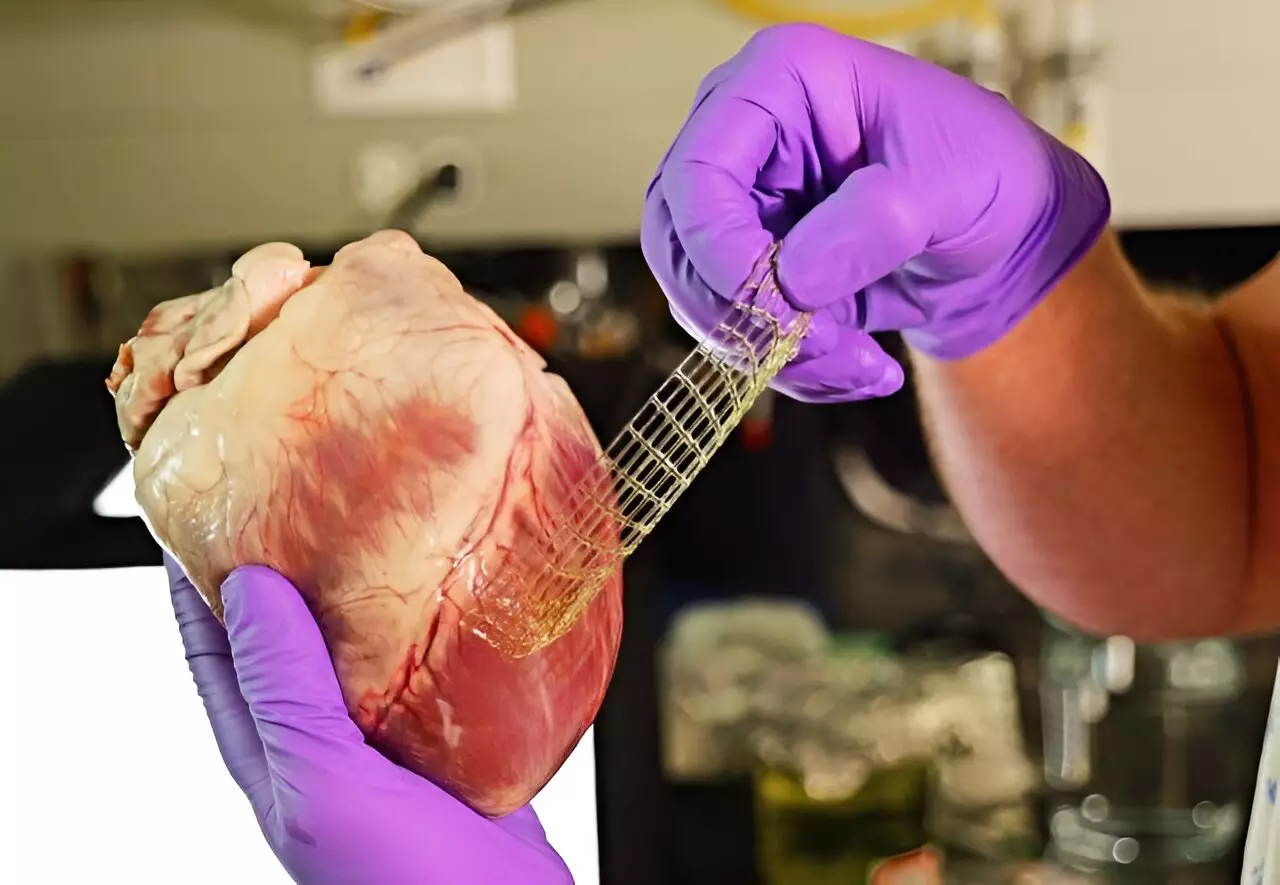The human body consists of intricate tissues that possess a combination of properties—strength, elasticity, and adaptability—that are challenging to replicate, especially with synthetic materials. As scientists and medical researchers strive to create artificial tissues and organs, they must consider the diverse structural attributes of genuine human tissues. A recent collaboration led by the University of Colorado Boulder, along with researchers from the University of Pennsylvania, has achieved a significant milestone in this field. Their groundbreaking work involves a new method of 3D printing that allows materials to be strong enough to endure the stress of the human body while also remaining flexible to accommodate movement and natural repair processes.
Published in the journal *Science*, this innovative technique introduced by the team provides an exciting avenue for the development of next-generation biomaterials. These materials can potentially serve functions such as internal bandages for targeted drug delivery and sutures that do not require needles, significantly easing surgical procedures. According to Jason Burdick, a professor at CU Boulder, cardiac and cartilage tissues have minimal innate healing capabilities, making innovative repair materials crucial for patients with injuries in these areas. His insights highlight the necessity of resilient biomaterials that not only support the healing process but also align with the body’s natural dynamics.
Historically, biomedical implants were produced using traditional methods such as molding or casting, which limit customization and personalization for patients. This approach typically results in the creation of one-size-fits-all implants that may not effectively fit an individual’s anatomical needs. With the advent of 3D printing, however, medical research has entered a transformative phase where materials can be engineered and tailored for specific requirements. Unlike conventional printing that deposits ink, 3D printing permits the layering of various materials—including plastics, metals, and biological cells—allowing for intricate and nuanced designs.
Despite the potential of hydrogels—materials known for their pliability and moisture-retaining properties—transitioning these materials from laboratory settings to real-world medical applications has proven difficult. Typical hydrogels face significant limitations; they often fail under stress by cracking or tearing, thus limiting their usability in dynamic body environments.
To devise a solution that blends strength with elasticity, the CU Boulder team drew inspiration from nature. They observed the movement of worms that tangle and untangle in complex ways, providing insights into molecular configurations that could enhance mechanical properties. The researchers introduced a new 3D printing method called CLEAR (Continuous-curing after Light Exposure Aided by Redox initiation), which achieves molecular entanglement in a manner reminiscent of these worms, resulting in tougher and more resilient materials.
A series of rigorous tests showcased the capabilities of these innovative materials. They withstood extreme stretching and compressive forces, demonstrating their ability to mimic the physical demands placed on human tissues. Impressively, samples even maintained their structural integrity when subjected to load, an achievement that surpassed results from conventional 3D printing techniques like Digital Light Processing.
The implications of this research extend far beyond creating stronger hydrogels. This novel 3D printing technology opens pathways to repair and regenerate damaged tissues without the complications associated with stitching, paving the way for significant advancements in surgical practices. Burdick envisions applications such as restoring integrity to damaged hearts, delivering regeneration-promoting drugs directly to injured sites, and even aiding in spinal health through bulging disc treatments.
Moreover, the research team emphasizes that their new method is environmentally advantageous, eliminating the need for additional energy resources typically required in the curing process of traditional materials. This aligns with a growing emphasis on sustainable practices in biomedical engineering and manufacturing.
The ramifications of this breakthrough are expected to spread beyond the immediate realm of medical science. With this 3D printing technique, industries beyond healthcare may harness it to enhance the mechanical properties of various materials. According to Abhishek Dhand, a doctoral candidate involved in this study, this technology could democratize 3D printing tools, enabling researchers and industries alike to innovate and improve material performance across multiple applications.
The collaborative effort represents a significant leap forward in the adaptation of 3D printing for personalized medicine and could lead to potential patents and further investigations to evaluate tissue-material interactions. Overall, this remarkable advance in biomaterials signifies a vital step towards integrating engineering solutions with biological realities for better patient outcomes.


Leave a Reply